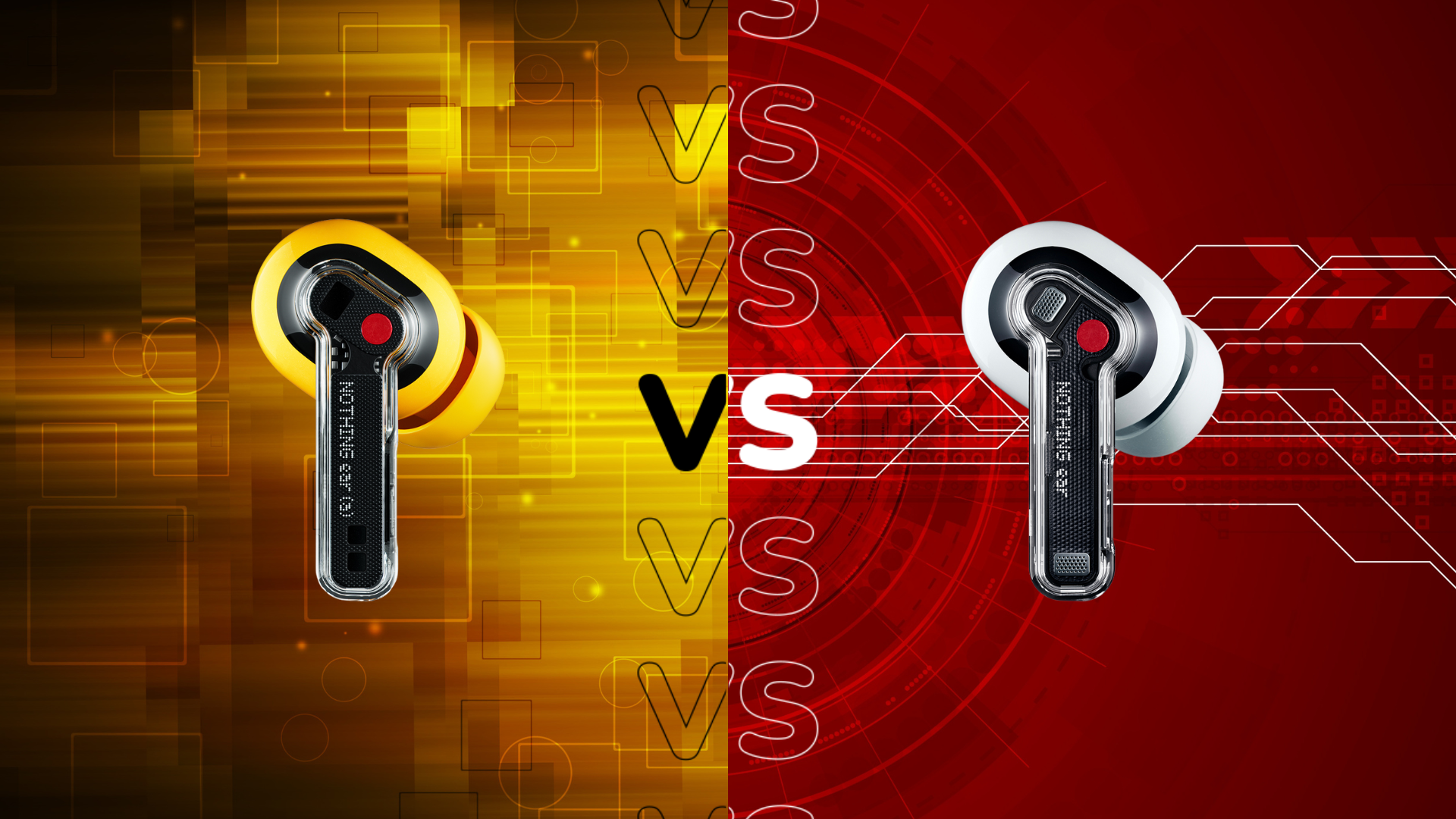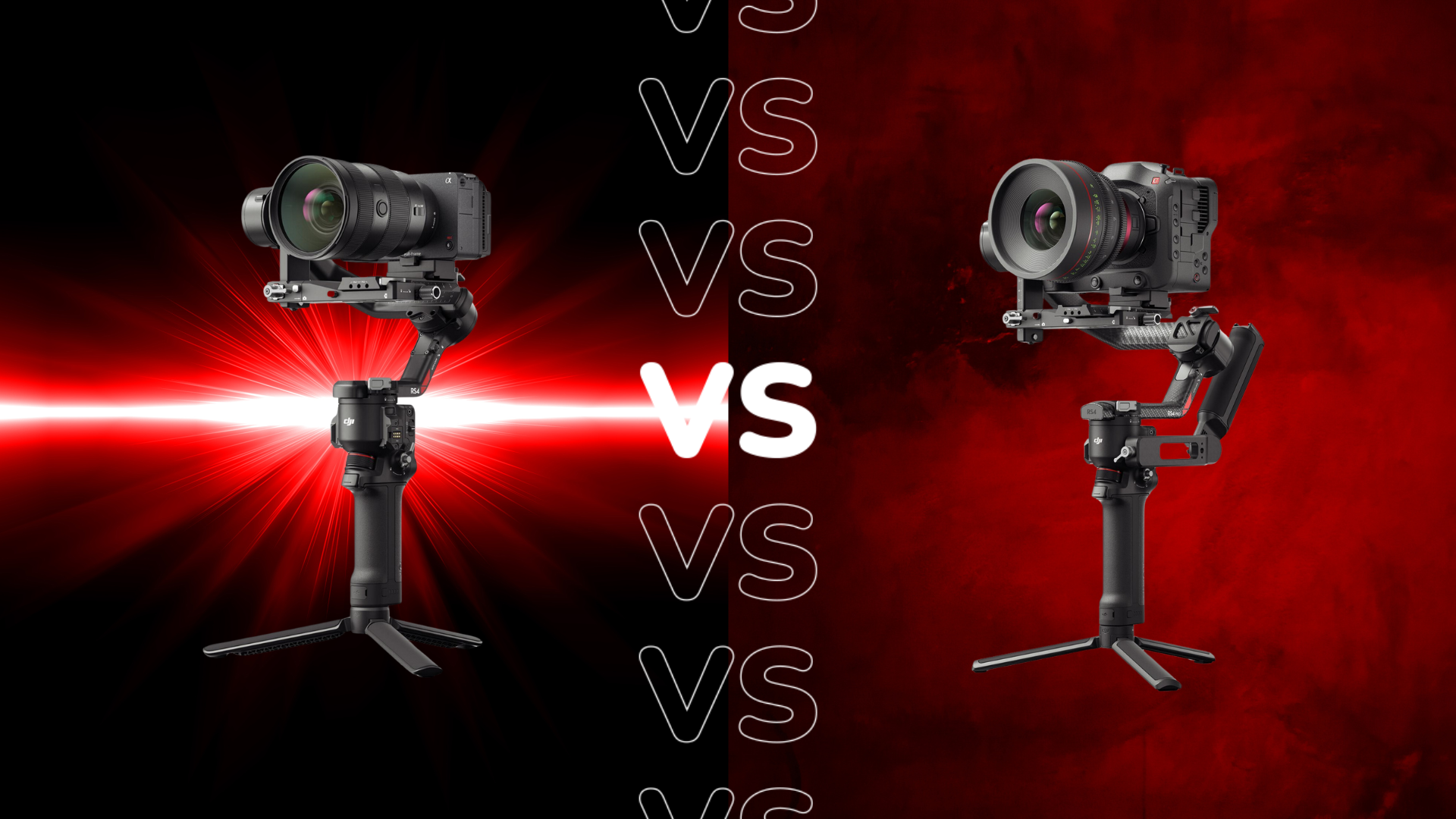Lenovo Yoga Pro 9i vs MacBook Pro (2023): What should you pick?
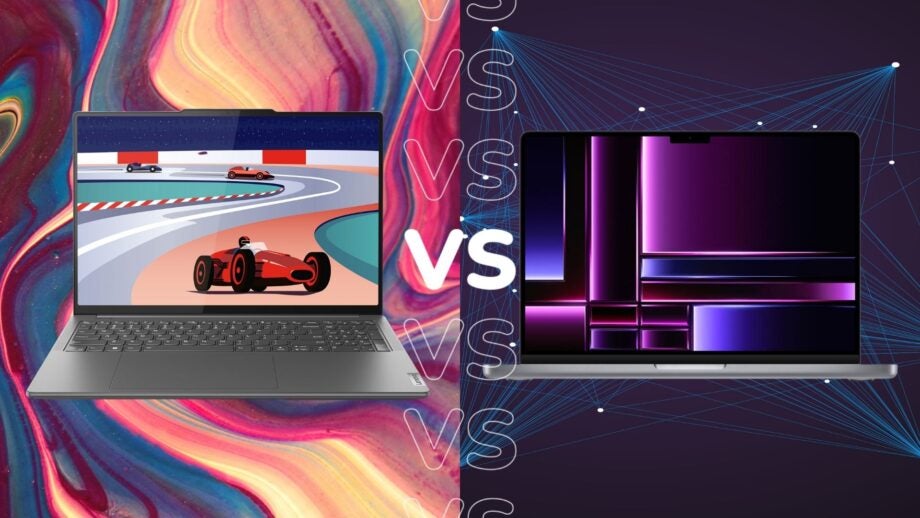
The newest laptop components from Intel and Nvidia have invited brands to go hard on relatively thin and lightweight machines that pack a whole lot of power – the Lenovo Yoga Pro 9i is the latest to stand up to the MacBook Pro.
Laptops with a combination of high-performance Intel processors and Nvidia graphics chips are nothing new, especially when it comes to gaming machines. But, in 2023, brands are putting a renewed focus on getting these components into slimmer and more stylish-looking laptops. There’s the Samsung Galaxy Book3 Ultra and, now, we have the Lenovo Yoga Book Pro 9i.
We’ve got a full review of the MacBook Pro (2023) up on the site, and a hands-on impression of the Lenovo Yoga Pro 9i with a full review to follow in the coming weeks. For now, let’s see how they compare on specs, with a sprinkle of our experience with Apple’s latest high-end creative laptop thrown in and early thoughts on its new Lenovo rival.
Lenovo Yoga Pro 9i is cheaper, sort of
There’s a huge difference in starting price, with the Lenovo Yoga Pro 9i beginning at €1699 for both the 14-inch and 16-inch models. Unfortunately, we’re yet to get UK pricing for the new Lenovo laptop. By comparison, the 14-inch MacBook Pro starts at €2399 (£2149) and €2999 (£2699) for the 16-inch.
However, the big caveat is that we’re yet to get pricing information beyond the base model for Lenovo’s machines and you can expect the pricing to rise significantly as it moves up from the base Intel Core i5-13505H, Nvidia RTX 4050, 16GB RAM, 512GB SSD and LCD display model. At the high-end, you can spec up to a Core i9-13905H, RTX 4070, 64GB RAM, 1TB SSD and a Mini LED panel.
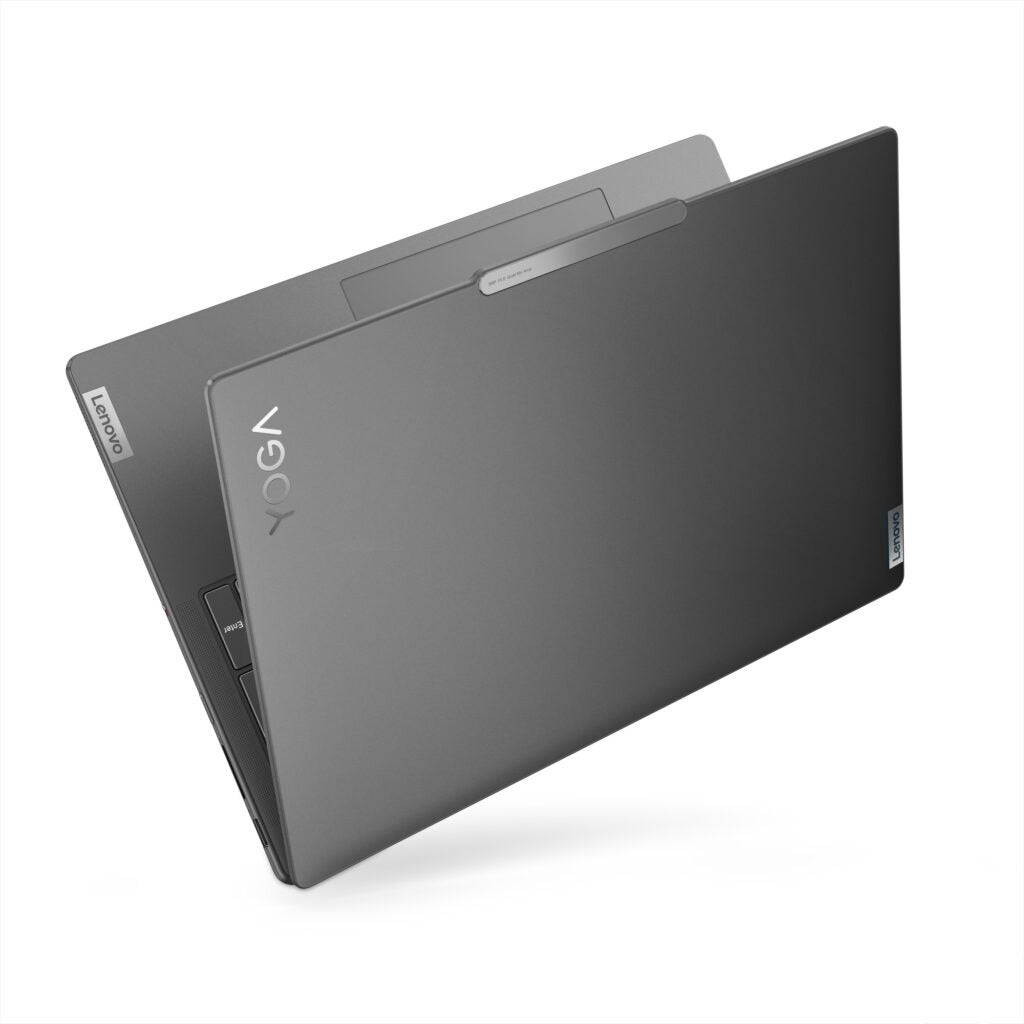
The top-of-the-line spec is where we’d expect to see a competitor more in line with the performance the M2 Max-sporting MacBook Pro models offer. Nevertheless, you’ll still be able to get the base Lenovo device for significantly cheaper than the base MacBook Pro 14-inch. We’ll see if the difference makes for good value for money once we get our hands on the Lenovo Yoga Pro 9i for our full review.
MacBook Pro offers peak performance, even when unplugged
We’re going to be saying this for some time: the MacBook Pro has a huge upperhand on Windows laptops for unplugged performance. When on battery, Apple’s creative machines largely perform the same as they do while charging, while Windows’ more powerful laptops see a significant drop off when not attached to power. We will have to reserve full judgement until our full review, but we very much expect the same to be true of the Lenovo Yoga Pro 9i.
On battery, there’s a broad range of performance capabilities that both these devices can offer due to the range of models and the power gap between the base version as well as the top of the range. We’d expect that a head-to-head between the highest-spec versions of these devices would lead to a small win on the side of the MacBook Pro but we’ll reserve firm judgement until we’ve had a chance to carry out benchmarking.
Lenovo has the might of Windows gaming on its side
Aside from sheer performance, powerful Windows laptops still have a trump card against the MacBook Pro and that’s great access to gaming. Whatever specs of the Yoga Pro 9i you choose, you’ll get a graphics chip that can play the broad church of games available today. The options on the table for the Lenovo are the Nvidia GeForce RTX 4050, RTX 4060 or RTX 4070, alongside Intel’s latest 13th Generation H-series chips.
The gaming performance is the main draw but, of course, using Windows means you can nab anything you’d like from the Steam, Epic Games, Ubisoft Connect, Xbox PC apps and more available on the operating system.
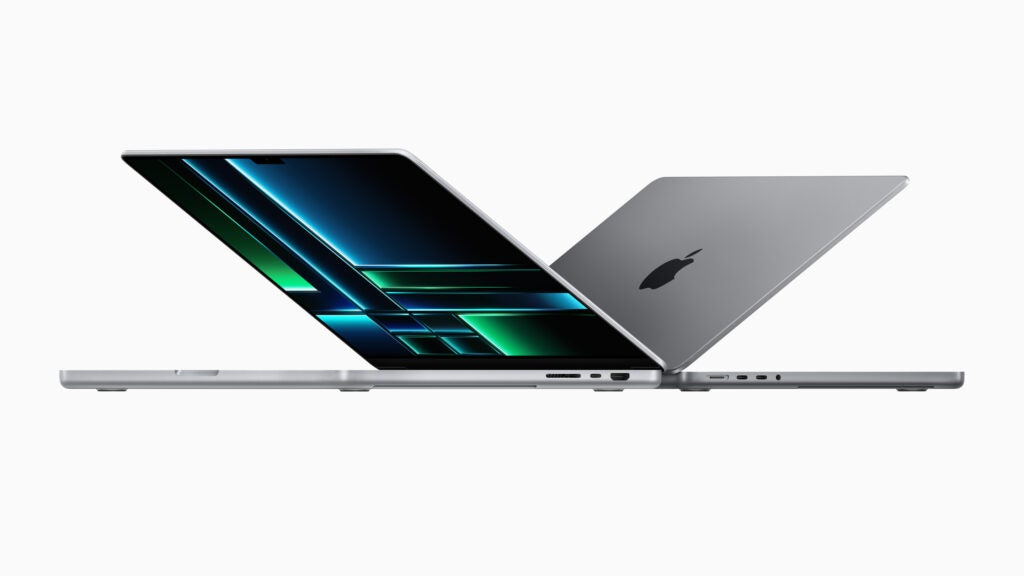
Both displays use Mini LED technology
Some may have been released in 2022 but given its widespread use on devices we’re seeing hit the shelves this year, it’s safe to say 2023 is the year of the Mini LED display laptop.
Mini LED uses smaller LEDs than your typical LED panel, offering more dimming zones and, as a result, improved contrast and black levels.
Apple’s Mini LED panel, which it calls Liquid Display XDR, comes with a 3456×2234 resolution for the 16.2 inch and 3024×1964 for the 14.2 inch laptop. There’s a maximum typical brightness of 500 nits and a whopping 1000 nits for HDR content. The refresh rate goes up to 120Hz too, using Apple’s ProMotion technology. Apart from the notch, we loved this punchy and ridiculously bright display in our review.
Having gone hands-on with the Lenovo Yoga Pro 9i, we came away with a strong first impression. Its Mini LED display offers up to a 3072×1920 resolution for the 14.5-inch version and 3200×2000 for the 16 inch. We saw the 16 inch and the result was extremely bright and rich, but we’ll need more time with the machine to fully assess it. The Mini LED panel also comes with a 165Hz refresh rate on both models. Another tick in the ‘Pro’ column for gamers looking at the new Lenovo.
The Mini LED display is optional for the Yoga Pro 9i, making it another added cost to consider. The regular LCD version does offer the same resolution and refresh specs though.
The Yoga Pro 9i is heavier and thicker
Breaking from modern convention, the MacBook Pro models actually got thicker when Apple revamped the design back in 2021. Nevertheless, both models of Apple’s professional laptops come in thinner and lighter than Lenovo’s latest machine.
The heaviest and thickest MacBook Pro is the M2 Max-touting 16-inch model, which weighs 2.2kg and is 1.68cm thick. The 16-inch Lenovo Yoga Pro 9i comes in at 2.23kg and 1.82cm. Not a huge difference but the 16-inch MacBook Pro is far from the smallest and lightest machine, so any advance on that means you should consider the burden on your back if you’re transporting either of these machines day-to-day.
The very smallest version of these machines available are the 14.5-inch Lenovo, coming in at 1.65kg and 1.69cm thick, and the M2 Pro 14.2 inch MacBook Pro, weighing 1.6kg and 1.55cm thick. So, Apple has the win across the board.
Early Verdict
Despite the likelihood that these devices will have comparable raw performance, these are very different laptops and you’ll have a different perspective depending on your workload
The MacBook Pro (2023) is an excellent laptop for creators that shines on the go, offering similar performance away from a plug. The Lenovo Yoga Pro 9i should, similarly, be a strong option for creators with an Nvidia graphics chip powering it. Your preference for Windows and MacOS could be how you make the final decision. On the face of it, the MacBook Pro may have the upper hand but our testing of the Yoga Pro 9i may tell a different story.
The main thing the Yoga Pro 9i has over the MacBook Pro (2023) is gaming, so it’s the easy pick if you’re an avid gamer who wants a stylish machine with a lush display that can also handle creative duties.


